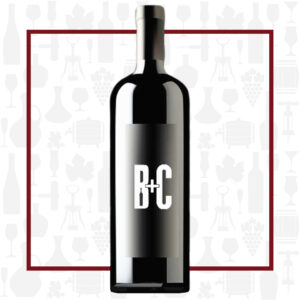Cellar Profile
Region
Adelaide Hills is a wine growing area in the Mount Lofty Ranges region of South Australia. It is one of the largest wine regions in the state, reaching the Flurried Peninsula and McAllen Vale in the south, and the Bares and Eden Valleys in the north. Key to the region’s grape growing is the altitude of its vineyards, which range from 400 to 650 masl. This gives the region, in an Australian context, a cool climate. Throughout the Adelaide Hills, the ripening season has historically been dry. This, along with cooler temperatures, allows the grapes to mature at a slow pace, resulting in concentrated wines.
Vineyard
Devil’s Elbow Cabernet Sauvignon is sourced entirely from Longview’s vineyard at Macclesfield. Adelaide Hills. Longview is located on the South Eastern Ridge of the Mount Lofty Ranges; to the south lies the southern ocean, to the east Lake Alexandrian. This accounts for a slightly higher average temperature than the rest of the Adelaide Hills while still remaining a cool-climate site. Most rainfall occurs in winter; throughout summer, warm days are followed by cool winds shifting from the southern waters of Lake Alexandrian and the coast. These conditions result in a very high diurnal range which is quite site-specific, ensuring a breadth of flavours and aromatics in the grape berry. Longview fruit is all sourced from the single estate and therefore much of the work to provide depth and character is completed in the vineyard. Each block is serviced differently in order to build complex flavour profiles; these are then fermented separately and blended to make the wine of any one vintage. The Devil’s Elbow Cabernet Sauvignon fruit is sourced from the North facing slope, which receives the longest sun hours in the vineyard.
Varieties
Cabernet Sauvignon is probably the most famous red wine grape variety on earth and has successfully spread to almost every wine growing country. DNA profiling carried out in California in 1997 confirmed that Cabernet Sauvignon is the product of a natural genetic crossing between key Bordeaux grape varieties Cabernet Franc and Sauvignon Blanc. There are two key reasons for Cabernet Sauvignon’s rise to dominance. The most simple and primordial of these is that its vines are highly adaptable to different soil types and climates; it is grown at latitudes as disparate as 50°N (Okanagan Valley, Canada) and 20°S (northern Argentina), and in soils as different as the gravels of Pessac-Leognan and the iron-rich terra rossa of Coonawarra. Secondary to this, but just as important, is that despite the diversity of terroirs in which the vine is grown, Cabernet Sauvignon wines retain an inimitable “Cab” character, nuanced with hints of provenance in the best-made examples. Cabernet Sauvignon wines always seem to demonstrate a handful of common character traits: deep color, good tannin structure, moderate acidity and aromas of blackcurrant, tomato leaf, dark spices and cedarwood.
Winemaking
The fruit was hand-picked to minimize fruit damage, then fermented on skins for 7 days. After malolactic fermentation, the wine was aged in old and new French Oak Barriques for 20 months.
Tasting Notes
Purple violet in colour. The nose displays blackcurrant, spiced cherry, mint and clove aromas. Toasty oak and vanilla as well as plush tannins mingle with dark fruit elements to lead to a clean and long finish.

 info@buyersandcellars.ca
www.buyersandcellars.ca
info@buyersandcellars.ca
www.buyersandcellars.ca